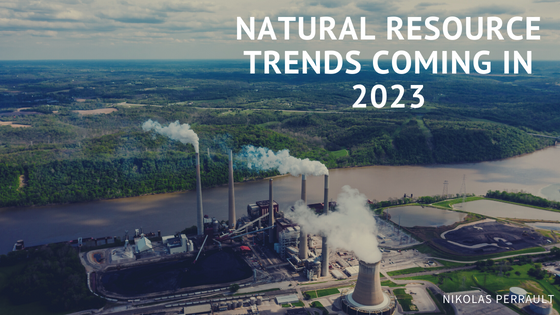Developing sustainable energy sources is one of the most critical issues facing policymakers and political leaders as they try to address climate change. Various factors are making headlines, such as the lack of natural gas supplies, the fracking controversy, and proposed laws that regulate electric vehicle sales.
Some of the trends predicted in last year’s sustainability outlook are still happening. Some of these include the increasing environmental lawsuits and the momentum toward net zero.
In addition to these, new themes are also being introduced to the sustainability industry. We predict that seven trends will emerge in 2023.
Biodiversity
Due to the increasing requirements for net environmental gains, biodiversity is becoming more prevalent in project planning. In addition, we expect to see the development of new reporting frameworks that will allow companies to identify and manage their biodiversity. However, whether these will be integrated into the ESG reporting systems and standards is still being determined.
In the future, biodiversity is also expected to become a part of the mainstream with the development of new credit markets and regulations.
Nature Based Solutions
Due to the increasing number of requirements for implementing nature-based solutions, the demand for natural capital is expected to grow. This is because investors are becoming more demanding of companies that can identify and manage their risks related to natural capital. This will increase the number of investors who are looking for natural capital in various forms, such as land, shoreline sites, and watersheds.
The increasing number of investors demanding nature-based solutions is expected to develop new asset classes focused on mitigating the risks associated with natural capital. The scramble for natural capital will also result in new partnerships between financial institutions and professional services firms. These will include collaborations between fintech, climate tech, and geotech tools.
Key Suppliers of Fossil Fuels
In 2021, Russia was the world’s largest producer of fossil fuels. Its invasion of Ukraine has caused global energy markets to be volatile. In the new year, Europe is expected to turn to Asia for its energy needs, which could increase the demand for natural gas, coal, and oil from countries such as Malaysia, Indonesia, and Vietnam.
The rising demand for dirty fuels is also expected to cause the prices of these products to increase in Asia. These markets are susceptible to geopolitical conflicts and global pandemics.
This highlighted the importance of nations becoming energy independent. They may become affected by political developments and pricing influenced by supply and demand.
Hi-tech Agriculture
The conflict in Ukraine and Russia has led to supply chain disruptions and labor shortages, which have pushed food prices to their highest levels in a decade. The increasing use of technology to increase food production at the lowest cost is expected to continue.
In response to the increasing demand for food, a research institute in the Philippines developed a genetically modified rice strain to provide more people with nutritious food. In China, a company known as Sananbio developed a conveyor system that can automate the transplanting and seeding of crops on farms. In 2023, another company known as Kaisheng Haofeng is expected to introduce robots to its nurseries.
Various companies are expected to introduce lab-grown meals made from cells in the coming years. One of these is Singapore-based Shiok Meats, which will start producing shrimp and lobsters using its cell-based technology. Regenerative farming is expected to be a trend in sustainable agriculture this year. This method of farming involves restoring degraded soil.
More Sustainable and Flexible Products
The rising cost of living has prompted many customers to become more financially secure and prepare for the future. Consumers are looking for intelligent financial choices that don’t sacrifice their quality of life even though the economy is tough. This includes factors like sustainability and flexibility.
People are expected to change their lifestyles and eat less meat in the coming years. They’ll also buy cheaper produce and produce that is locally grown. This will have a significant impact on their views on sustainability and nutrition.
Due to the increasing number of claims about free delivery, environment-friendly practices, and local benefits, consumers will become more skeptical. This will also affect the transparency of the claims made by companies.
AI and Climate Tech
The increasing number of tech developers will continue to drive innovation in sustainability. They’ll be able to help companies improve their environmental and social performance (ESG) by analyzing and reporting on their data.
There will be new developments related to AI, and the increasing interest in its potential can either positively or negatively influence sustainability. Deep learning models require a lot of energy to perform correctly. Through AI, organizations can improve the efficiency of their operations by developing effective forecasting and management tools for managing their energy consumption and agricultural yield.
